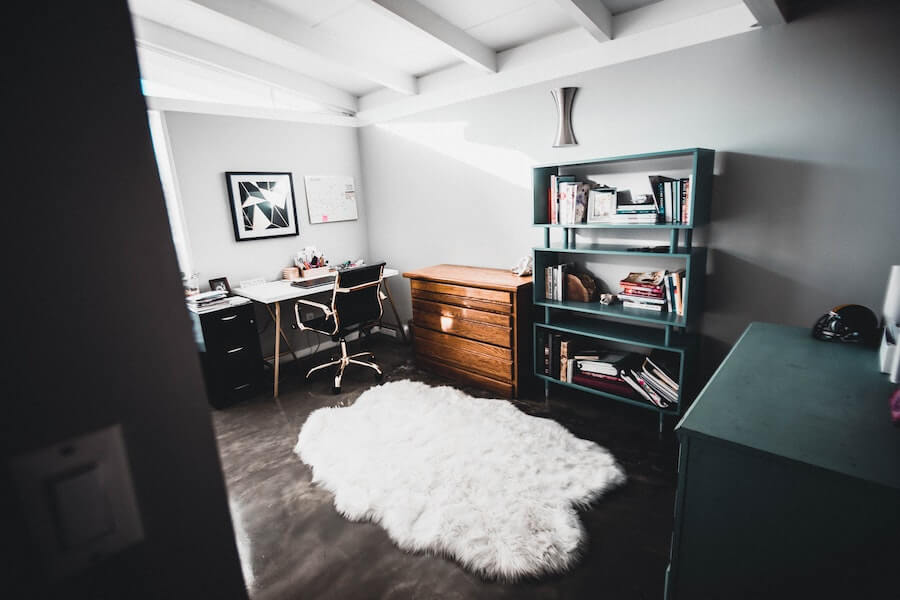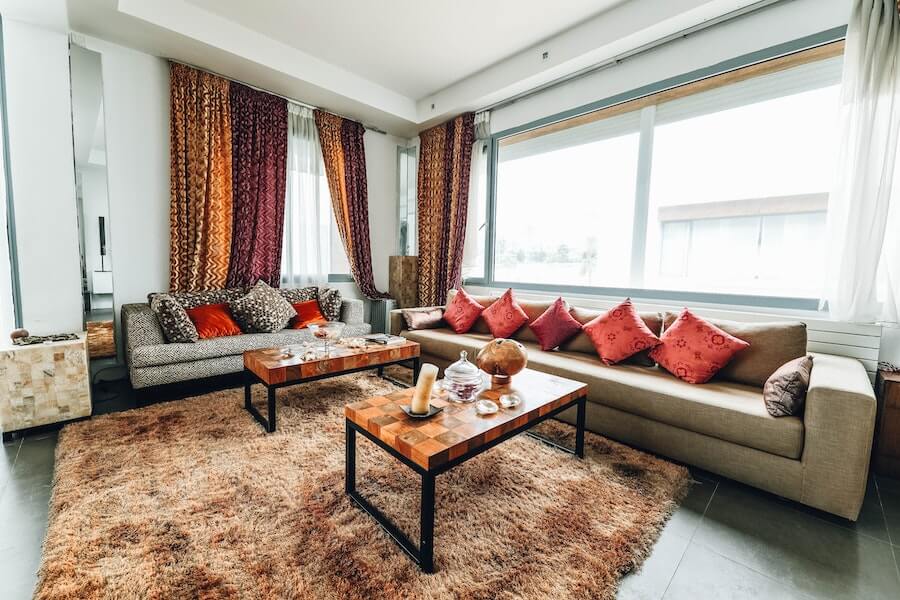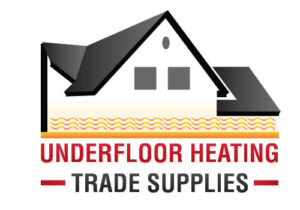Rugs or carpets—which works better in your home? If you’ve got underfloor heating, the answer might not be as simple as it seems.
If you’re trying to decide between a rug or carpet for a warm, comfortable floor, there are a few things to think about. While both can work well with underfloor heating systems, each option has its strengths. In this article, we’ll look at the difference between rug and carpet, compare their pros and cons, and help you choose what’s best for your space and lifestyle.
If you’re looking for other flooring types to pair with underfloor heating, try our guide on what is the best flooring for underfloor heating.
Key Points:
- Understand the difference between rug and carpet.
- Learn which works better with underfloor heating.
- Discover the pros and cons of rug vs carpet.
- Find out when to use one over the other.
- Choose based on comfort, budget, and room use.
What Is A Rug?
A rug is a moveable floor covering that can be placed just about anywhere in your home. Unlike fixed flooring options, rugs don’t require installation—you simply unroll one and position it where it suits your layout or décor. If you change your mind, just move it to another spot.
Rugs often come with stitched or bound edges to stop fraying and are usually made from fabric blends like wool, cotton, or synthetic fibres. While most rugs are thinner than carpets, you can pair them with underlay or a non-slip pad to keep them in place and provide a little more softness underfoot.
When comparing rug vs carpet, size plays a big part. Rugs are designed to cover small areas, whether it’s under a coffee table, in front of the sofa, or by the side of your bed. This makes them more flexible than carpet, especially in homes with hard floors like wood or laminate. They’re also easier to maintain—many can be shaken out, spot-cleaned, or even machine-washed depending on the material.
It’s worth noting that while a high-quality rug may sometimes cost more per square metre than budget carpet, they are easy to use, portable, and no installation costs make it a popular choice. If you’re considering rug or carpet options for underfloor heating, rugs are ideal when used correctly, as they allow more of the heat to travel through exposed floor sections.

What Is A Carpet?
A carpet is a fixed floor covering that usually runs from wall to wall. It’s supplied in large rolls and must be cut to fit your room’s exact dimensions. Most people hire a professional to install a carpet, though confident DIYers may choose to do it themselves with the right tools and care.
Carpets are often seen as the more permanent option in the carpet vs rug debate. Once laid, they stay in place and won’t shift underfoot, making them a good option in rooms with high foot traffic. You’ll also get more padding and underfoot comfort with the right underlay—though this can also increase installation time and cost.
While carpets usually cost less per square metre than a designer rug, they come with additional labour and preparation costs. Cleaning can also be more involved since carpets can’t be removed for airing or spot-cleaning like a rug can.

Understanding The Difference
The main difference between rug and carpet comes down to three things:
- Size: Carpets cover the entire floor; rugs cover specific sections.
- Fixing: Carpets are installed and secured; rugs are loose and flexible.
- Function: Carpets are permanent and insulating; rugs are decorative and easy to reposition.
So when weighing up rug vs carpet, think about what you need from your floor—comfort, flexibility, and how easy they are to clean, or all three.
Comfort and Insulation
When choosing between rug vs carpet, comfort is one of the first things people think about. Carpets, especially those with a deep pile, provide a soft, padded feel underfoot that makes walking around your home more comfortable.
In living rooms or bedrooms, carpets help create a cosy environment where you can sit, stretch out, or let kids play safely on the floor.
Carpets also offer better insulation than rugs. Because they cover the full floor and are usually installed with underlay, they help keep heat in during colder months. This is especially helpful in homes with underfloor heating, where the goal is to distribute warmth evenly. Rugs, on the other hand, only cover part of the floor and tend to be thinner, so they don’t hold onto heat in the same way.
Soundproofing Properties
Another area where carpets stand out is sound reduction. Full-room carpeting helps reduce noise between floors and softens footsteps, which is useful in flats or multi-storey homes. Since a rug only covers a portion of the floor—and isn’t fixed in place—it tends to shift and flap slightly as you walk on it, which can actually increase noise levels in some cases.
So when it comes to soundproofing, carpets win. They create a quieter, more peaceful environment overall.
Design and Style Options
Whether you’re redecorating or just adding a finishing touch, both rugs and carpets offer plenty of options—but in different ways. Carpets come in a huge variety of colours, textures, piles, and patterns. From loop pile to cut pile, neutral tones to bold colours, there’s likely a carpet style to match your room theme.
Rugs, however, are perfect for creating contrast. You can layer a patterned rug over a plain floor (or even another carpet) to give the space a pop of colour or texture. This makes them useful as both a floor covering and a design tool.
Durability and Longevity
When comparing rug vs carpet for longevity, carpets generally last longer—especially when properly cleaned and maintained. Vacuuming regularly and cleaning up spills quickly can keep a carpet looking good for years.
Rugs, especially lightweight or decorative ones, can wear out faster. They might fade, snag, or flatten with heavy use. However, they’re easier to replace if damaged, and you can rotate them to help spread out wear.
Benefits of Rugs
The difference between rug and carpet isn’t just about size—it’s also about how flexible each one is. Rugs offer a quick and simple way to change the look and feel of a room without committing to a full installation.
- Easy to move and reposition – great for renters or seasonal updates
- Quick cleaning – many can be shaken, vacuumed, or spot-cleaned with little effort
- No installation required – just unroll and go
- Budget-friendly – ideal for smaller rooms or adding character on a budget
- Visually striking – great for defining spaces in open-plan homes

When To Choose A Rug
There are plenty of situations where a rug is a better option than a full carpet. For example, in entryways or under kitchen sinks, a rug adds warmth and protection without the need for permanent flooring. You can also use a rug to soften wooden or laminate floors or to highlight an area like a coffee table or reading nook.
Rugs work well when you want:
- A soft layer over hard flooring
- A decorative feature to break up a plain space
- An affordable and temporary solution
- Easy access to the floor underneath
- A quick way to update a room’s look without replacing the entire floor
When choosing between rug or carpet, think about the room’s purpose, how much foot traffic it gets, and whether you want a fixed or flexible solution.
When To Choose Carpet
In the carpet vs rug discussion, carpet makes more sense when you want a full-floor solution that adds warmth and softness throughout the room. It’s a solid choice for bedrooms, living rooms, basements, and stairs—anywhere you want that extra layer of comfort and insulation. Because it’s fixed in place, carpet also helps reduce noise between floors and creates a consistent look across larger spaces.
However, once installed, you can’t access the flooring underneath. This means carpet works better in rooms where you’re unlikely to change the layout or style often.
Carpet is ideal when:
- You have an exposed subfloor that needs covering
- You want full-room insulation and soundproofing
- You prefer a soft, padded surface underfoot
- You’re not planning frequent style changes
- You want a neat, uniform finish in the space
What’s the Best Choice for Your Needs?
If you’re stuck between a rug or carpet, think about your space. A rug works well over solid floors like wood or tile, where it can add comfort without covering the whole room. Carpet, on the other hand, is better suited to larger, colder rooms that need a full, fixed floor covering. The difference between rug and carpet often comes down to flexibility vs permanence.
To help you with your buying decision, here’s a comparison table:
| Feature | Rug | Carpet |
| Comfort | Adds softness to specific areas | Full-room comfort with thick underlay and pile |
| Insulation | Limited insulation due to smaller size and thinner material | Excellent heat retention across entire floor |
| Soundproofing | Some noise reduction, but limited by size and placement | Great sound insulation throughout the room |
| Flexibility & Placement | Easy to move, reposition, or swap out | Fixed in place, not easily changed once installed |
| Cleaning & Maintenance | Simple to clean, lift, and shake or wash | Requires regular vacuuming and occasional deep cleaning |
| Cost | Usually cheaper upfront, no installation needed | Lower cost per m², but includes install and underlay expenses |
| Design & Decor | Ideal for adding colour or texture over existing flooring | Broad range of styles, textures, and colours available |
| Durability | Can wear quicker, especially in high traffic areas | Long-lasting if well maintained |
| Best Used When… | You want a temporary, decorative, or budget-friendly solution | You need full-floor coverage, warmth, or a long-term flooring option |
| Cons | May slip without grip, less durable, limited coverage | Difficult to install/remove, hides subfloor, less flexible in style changes |
Are Rugs or Carpets Better For Underfloor Heating?

When paired correctly, rugs can work well with underfloor heating. Because rugs are smaller and easier to reposition, they allow more exposed floor area for heat to rise, helping the system work more efficiently. The key is to choose a rug with a low tog rating—ideally below 1.5—to avoid blocking heat. Lightweight rugs made from natural fibres like wool or cotton are a good choice.
However, using a thick rug with rubber backing or layering multiple rugs can trap heat and reduce performance. If you’re relying on underfloor heating as your main heat source, limit rug coverage and keep walkways clear for even warmth distribution.
On the other hand, underfloor heating can work with carpet, but only if the right type of carpet and underlay are used. The total tog value (carpet plus underlay) should be below 2.5 to allow heat to pass through efficiently.
Many modern carpets are now designed to be compatible with electric underfloor heating, and synthetic blends or short-pile carpets often perform best. Does underfloor heating work with carpet?
Underfloor Heating with Carpet or Rug?
Looking to pair underfloor heating with your choice of rug or carpet? We stock a wide range of electric underfloor heating systems that work beautifully with soft flooring—whether you prefer a full-room carpet or just a well-placed rug. If comfort is your priority, our under carpet heating options are designed for low-tog compatibility and quick warmth.
FAQs
Are a rug and a carpet the same thing?
No—there’s a clear difference between rug and carpet. A rug is usually smaller and designed to cover just part of a room. You can move it around as needed. A carpet, on the other hand, is fitted wall-to-wall and fixed in place, making it a more permanent floor covering.
Can a rug be used like a carpet?
Yes, especially if it’s a large rug. You can use an oversized rug to cover most of a small room and get a similar look and feel to carpet. While it might not cover the entire floor, a good-quality rug still offers comfort and warmth underfoot.
Is it possible to turn carpet into a rug?
You can. If you’ve got leftover carpet or a piece you like, you can cut it to size and use it as a rug. Just make sure to bind or tape the edges to stop them from fraying or curling over time.
Can I use any rug with underfloor heating?
Not quite. While rugs can be great over heated floors, avoid anything with rubber or foam backings, as they can trap heat. Choose rugs made from breathable, natural fibres like wool or cotton, and keep them lightweight to avoid blocking warmth.
Can I still use rugs over underfloor heating if I already have carpet?
Yes, but be cautious. Layering a rug on top of carpet that already sits over underfloor heating could reduce heat transfer and create uneven warmth. If you do want to layer, make sure both your carpet and rug are low tog and breathable.
Sources
Dan Floor. (2022) Understanding the Tog Rating and R Value of carpets. [online] Available at: https://www.danfloor.co.uk/understanding-the-tog-rating-and-r-value-of-carpets/ [accessed 16/07/2025]
